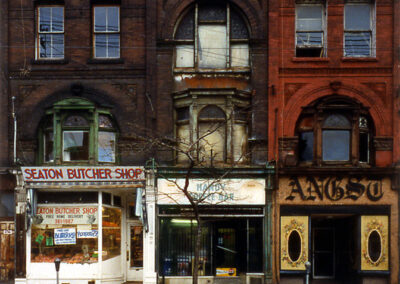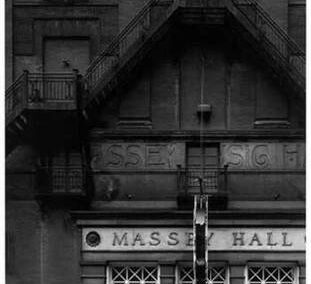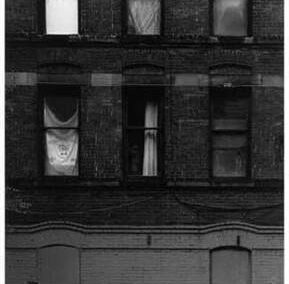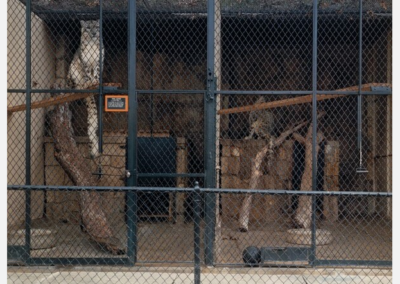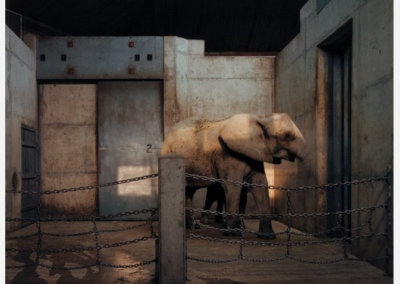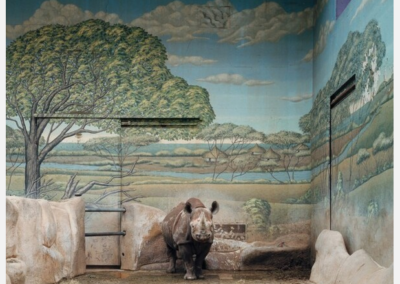Our next Artist You Need To Know was born in Berlin, but emigrated to Canada in 1966 where he initially worked as a cinematographer on documentary films, industrial commercials and even feature films. This clarity and sense of vision is something that – even with his different subjects – Volker Seding always brought to his images. Beginning in 1976, he focused exclusively on photography, and was producing his often haunting and unsettling images until he passed in 2007.
Volker is primarily known for his Animal Kingdom and Captive series: he ‘devoted over fifteen years of his career to capturing touching images of exotic species in captivity. The result was a number of exquisitely composed photographs of depressed looking animals in man made settings. Lions, tigers, monkeys, giraffes and elephants are captured in the moments of loneliness and sadness in enclosures with no socialization, enrichment or joy…The portraits of resigned, weary and solitary captive creatures perfectly depict the desolation and deprivation of zoos. But, Seding’s images not only focus our attention on their subjects, but also capture the proximity and estrangement of humans in relation to other life forms. His photographs show [our] carelessness towards the animal world and their environment.’ (Jasmine Lark)
-

Geoffrey Cat, Topeka, Kansas, 1987
-

Okapi, Munich, 1992
-

Giraffe, St. Louis, 1987
-

Hippopotamus, Brookfield Zoo, Chicago, 1985
-

Indian Rhinoceros, National Zoo, Washington D.C., January 1986
-

Hippopotamus, National Zoo, Washington, D.C., January 1986
Volker’s meticulous practice is consistent throughout all of his work: and the straight on ‘portraits’ of buildings imply a cramped anxiety, that is belied by his simplicity of vision. But this tension is present in his ‘animal’ works, too, with the small enclosures echoing the tightly packed tenements and buildings ‘we’ve’ built for ourselves.
-

Angst, 240 Queen St. E., Toronto, 2003
-

Painted City, Queen St. E., Toronto, 2002
-
![Cameron House, Queen St. West, Toronto [hello], 1998](data:image/png;base64,iVBORw0KGgoAAAANSUhEUgAAAXoAAAEcAQMAAADzw+2UAAAAA1BMVEUAAACnej3aAAAAAXRSTlMAQObYZgAAACNJREFUGBntwQEBAAAAgqD+r3ZIwAAAAAAAAAAAAAAAAAC4EzZcAAEK8YEQAAAAAElFTkSuQmCC)
Cameron House, Queen St. West, Toronto [hello], 1998
-

236 Queen Street East, Toronto, 1992
-

Massey Hall, Toronto, 1998
-

Sullivan Street, Toronto, 1998
In 2007 a book of his images titled Captive (Animals and Artifice: The Zoo Photographs of Volker Seding) was published with support from the Ontario Arts Council, Canada Council for the Arts and the Toronto Arts Council. Interspersed with Seding’s images are brief and empathetic observations about his interaction with his subjects.
-

Snow Leopard, San Antonio, Texas, December 1987, printed 1988.
-

Elephants, Metro Toronto Zoo January 1985
-

Black Rhinoceros, Brookfield Zoo, Chicago December 1985
Seding’s work is found in numerous important institutions and private collections, including the AGO – Art Gallery of Ontario; National Gallery of Canada; Winnipeg Art Gallery; The Museum of Fine Arts, Houston; Ryerson Image Centre and the Art Gallery of Hamilton. Notable exhibitions include Bestial Encounters at the Winnipeg Art Gallery and Natural History, Justina M. Barnicke Gallery, at the University of Toronto. His work is represented by the Stephen Bulger Gallery.
.


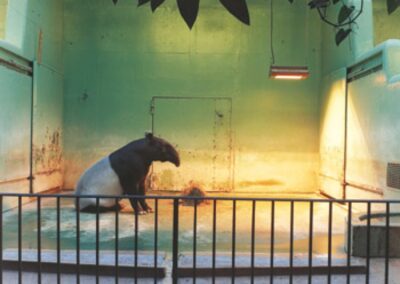



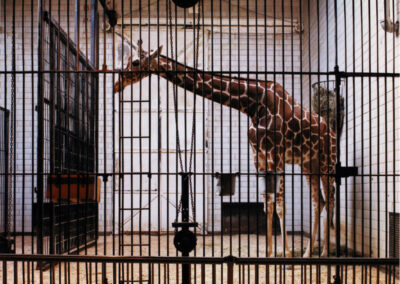

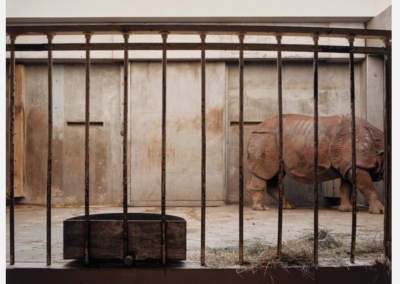
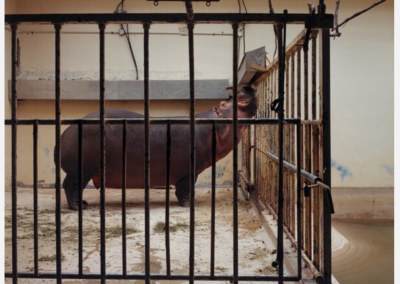


![Cameron House, Queen St. West, Toronto [hello], 1998](https://artishell.com/wp-content/uploads/2020/12/Cameron-House-Queen-St.-West-Toronto-hello-1998-378x284.jpg)
